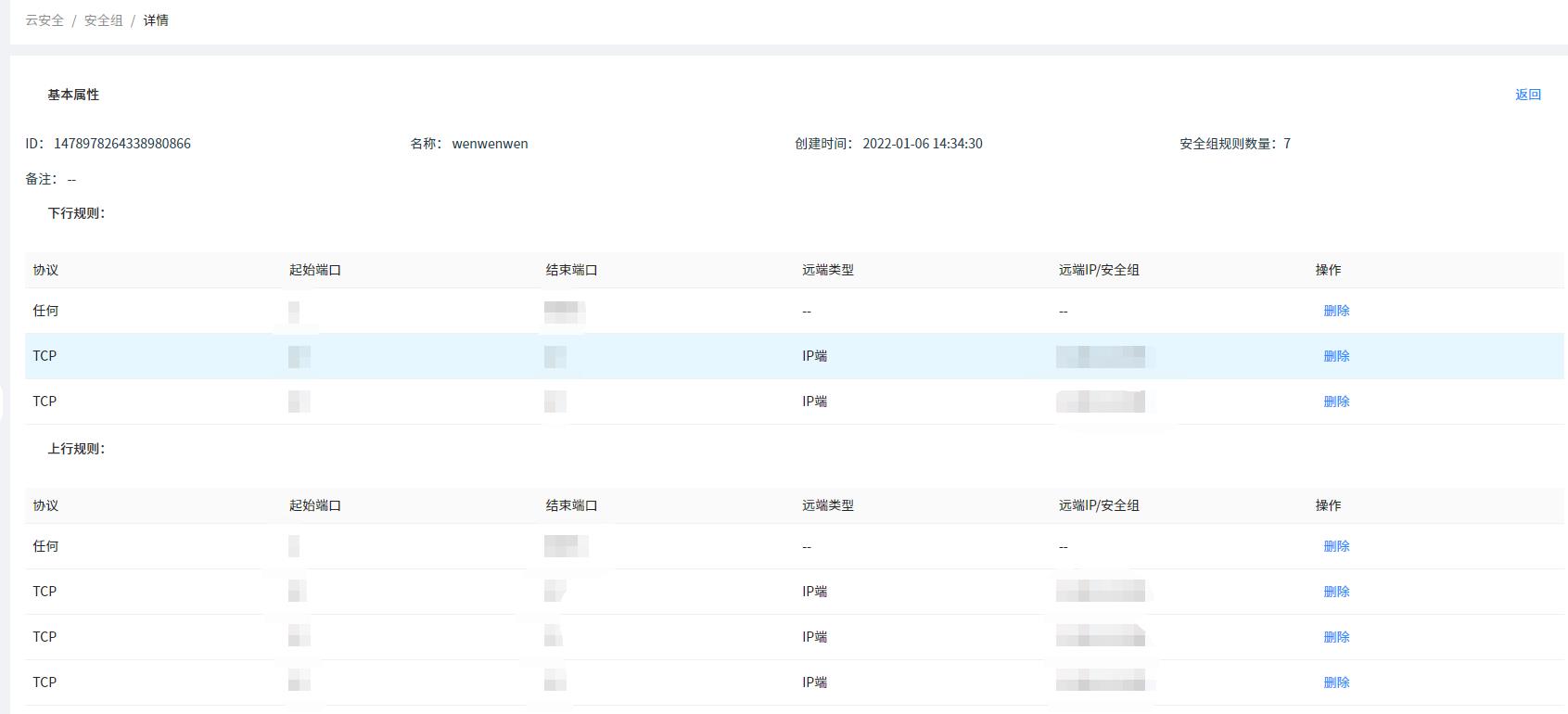Java:List集合结合实战需求分析
Posted ABin-阿斌
tags:
篇首语:本文由小常识网(cha138.com)小编为大家整理,主要介绍了Java:List集合结合实战需求分析相关的知识,希望对你有一定的参考价值。
我是 ABin-阿斌:写一生代码,创一世佳话,筑一览芳华。 如果小伙伴们觉得我的文章不错,记得一键三连,感谢~
文章目录
添加操作
- 在开发中我们往往会遇到如下图中一样添加多行多个或一个的需求,初学者的小伙伴可能一下不知道如何去构思。下面我就来讲讲遇到这种需求时如何去分析,有兴趣的伙伴可以看看。

问题分析
- 从上图中我们可以看到前端可以进行无限添加的,那么这个之后他们传进来的参数就是说是可以多份的
- 这时我们可以集合 Java 当中所学的 List 集合方案来解决这一问题。我们知道 List就是一个盒子,那么盒子里面放的就是多条数据。这样一想那么这个问题就很好解决了。
- 如果对 List 集合不熟悉的小伙伴可以看我的这篇文章:Java基础:集合:List接口的介绍与使用
- 下面我们就用代码来实现这个思想,看看是否成立
代码演示
入参:Param
- 这里我们是一个对像里面嵌套了一个 List集合,然后这个List集合是多个字段,所以我们用一个对象来存,直接使用的是一个内部类的方式,具体可以根据自己项目需求来变化。
- 对于内部类不熟悉的小伙伴可以看我这篇文章:Java基础:面向对象:代码块与内部类的介绍与使用
@AllArgsConstructor
@NoArgsConstructor
@Data
@Accessors(chain = true)
public class AddSecurityGroupParam
@ApiModelProperty("id(数据库中的id)")
private String id;
@ApiModelProperty("用户ID")
private Long userId;
@ApiModelProperty("安全组名称")
private String securityGroupName;
@ApiModelProperty("安全组备注")
@Length(max = 30,message = "安全组备注不能超过30个字符")
private String securityGroupRemark;
@ApiModelProperty("下行规则列表")
private List<Rules> inboundRules;
@ApiModelProperty("上行规则列表")
private List<Rules> outboundRules;
@AllArgsConstructor
@NoArgsConstructor
@Data
@Accessors(chain = true)
public static class Rules
@ApiModelProperty("安全组规则id")
private Long ruleId;
@NotNull
private Integer protocolType;
@ApiModelProperty("起始端口")
@Pattern(regexp = PORT_PATTERN, message = "端口输入不正确,端口范围:1~65535")
private String startPort;
@ApiModelProperty("结束端口")
@Pattern(regexp = PORT_PATTERN, message = "端口输入不正确,端口范围:1~65535")
private String endPort;
@ApiModelProperty("远端类型")
private Integer remoteType;
@ApiModelProperty("远端安全组id")
private Long remoteGroupId;
@ApiModelProperty("源IP")
private String srcIp;
@ApiModelProperty("TAG")
private String tag;
@ApiModelProperty("备注")
private String remark;
@ApiModelProperty("状态")
@NotNull
private Integer status;
具体实现:ServiceImpl
- 从上面代码中的入参参数,我们就可以轻松的写出业务代码了
- 下面代码只提供具体 List 集合思路,其余的业务就不写了,你们可以根据实际业务改。
细节分析:
- 这个 param.getInboundRules() 就是上面代码中的集合参数
//下行规则列表
if (ObjectUtil.isNotEmpty(param.getInboundRules()))
for (AddSecurityGroupParam.Rules inboundRule : param.getInboundRules())
if (ObjectUtil.isEmpty(inboundRule.getRuleId()))
securityGroupEntity.setSecurityGroupUuId(groupEntity.getSecurityGroupUuId());
//这里我抽取了一个方法
addSecurityGroupRule(inboundRule, INBOUND_RULE, groupEntity, loginUser);
//抽取方法
private void addSecurityGroupRule(AddSecurityGroupParam.Rules inboundRule, Integer type,
SecurityGroupEntity securityGroupEntity, UserInfoEntity loginUser)
if (GroupAgreementEnum.ICMP.getStatus().equals(inboundRule.getProtocolType()))
inboundRule.setStartPort("1");
inboundRule.setEndPort("1");
else if (!GroupAgreementEnum.ANY.getStatus().equals(inboundRule.getProtocolType()))
Assert.isTrue(Pattern.matches(PORT_PATTERN, inboundRule.getStartPort()), "端口为1-65535的正整数");
Assert.isTrue(Pattern.matches(PORT_PATTERN, inboundRule.getEndPort()), "端口为1-65535的正整数");
Assert.isTrue(Integer.parseInt(inboundRule.getEndPort()) >= Integer.parseInt(inboundRule.getStartPort()), "起始端口不能大于结束端口");
else
inboundRule.setStartPort("1");
inboundRule.setEndPort("65535");
//这里就开始正式添加了
SecurityGroupRulesEntity securityGroupRulesEntity = new SecurityGroupRulesEntity()
.setSecurityGroupId(securityGroupEntity.getId())
.setType(type)
.setProtocolType(inboundRule.getProtocolType())
.setStartPort(Integer.parseInt(inboundRule.getStartPort()))
.setEndPort(Integer.parseInt(inboundRule.getEndPort()))
.setRemoteType(inboundRule.getRemoteType())
.setRemoteGroupId(inboundRule.getRemoteGroupId())
.setSrcIp(inboundRule.getSrcIp())
.setTag(inboundRule.getTag())
.setRemark(inboundRule.getRemark())
.setCreateTimeStamp(DateUtil.date().getTime());
//保存即可
securityGroupRulesService.save(securityGroupRulesEntity);
查询操作
- 上面的是添加操作,那么添加完之后我们要查询出来,由于是添加的多个那么这个时候我们怎么把这个:上下行规则 List集合 查询出来呢,可以看下面操作
原型
-
当用户点击详情时,需要返回这样的一个格式页面
-
返回的Vo其实跟我们上面添加进去的参数是一样的

代码演示
- 这里只做核心代码演示
//1、因为我们要返回的上下新规则是一个List集合,所以我们只要把这List集合new 出来就好
public SecurityGroupDetailsVo getSecurityGroupDetails(@NotEmpty String securityGroupId)
SecurityGroupDetailsVo securityGroupDetailsVo = new SecurityGroupDetailsVo();
List<SecurityGroupDetailsVo.Rules> ruleList = new ArrayList<>();
//2、new 出来的这个List是个空的,那么我们只需要把数据查出来,set到这个list中去就可以了
List<SecurityGroupRulesEntity> outboundRulelist = securityGroupRulesService.lambdaQuery()
.eq(SecurityGroupRulesEntity::getSecurityGroupId, Long.parseLong(securityGroupId))
.eq(SecurityGroupRulesEntity::getType, type)
.eq(SecurityGroupRulesEntity::getDeleted, NOT_DELETED)
.list();
//3、把上面查出来的List进行遍历,逐个set到我们要返回的这个:ruleList中去
for (SecurityGroupRulesEntity rules : outboundRulelist)
SecurityGroupDetailsVo.Rules rule = new SecurityGroupDetailsVo.Rules()
.setRuleId(String.valueOf(rules.getId()))
.setProtocolType(rules.getProtocolType())
.setStartPort(String.valueOf(rules.getStartPort()))
.setEndPort(String.valueOf(rules.getEndPort()))
.setRemoteType(rules.getRemoteType());
ruleList.add(rule);
//4、最后我们只需要将第一步这个List的东西set到我们返回的Vo对应参数就可以了
securityGroupDetailsVo.setInboundRules(ruleList)
返回出去的JSON格式
"data":
"securityGroupId": "",
"securityGroupIdName": "",
"securityGroupName": "",
"createTimeStamp": "",
"rulesNum": 7,
"remark": "",
"outboundRules": [
"ruleId": "",
"protocolType": 1,
"startPort": "1",
"endPort": "",
"remoteType": 0,
"remoteGroupId": "0",
"srcIp": "",
"status": 0
,
"ruleId": "",
"protocolType": 3,
"startPort": "",
"endPort": "12",
"remoteType": 1,
"remoteGroupId": "",
"srcIp": "",
"status": 0
]
以上是关于Java:List集合结合实战需求分析的主要内容,如果未能解决你的问题,请参考以下文章
